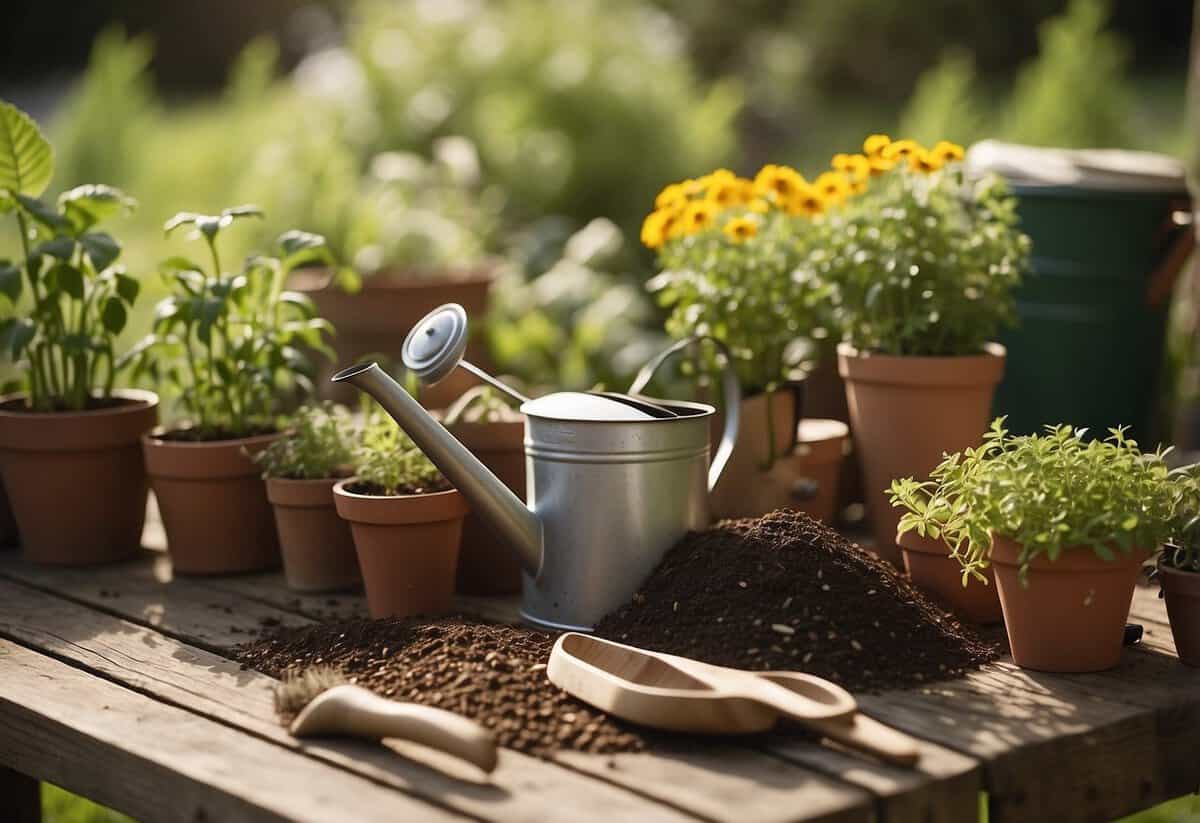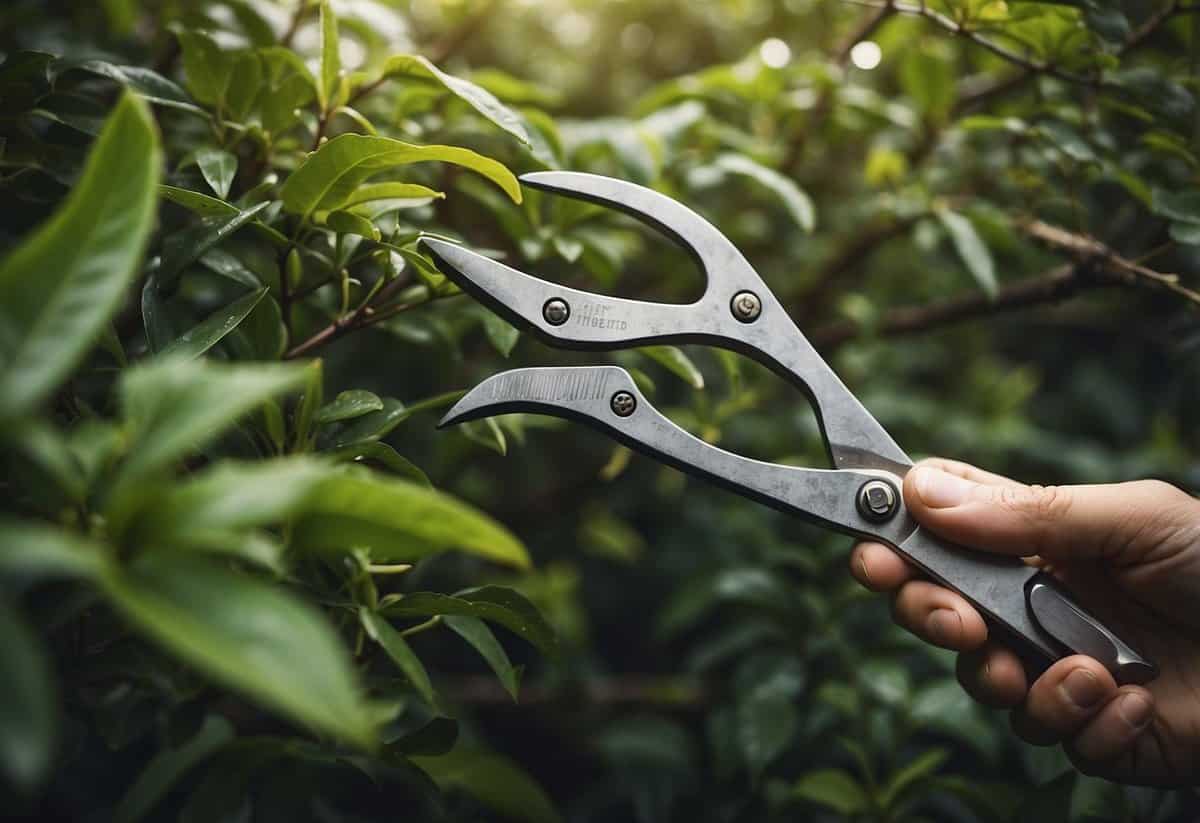Tips for Starting a Garden: Easy Steps for Beginners
Starting a garden can be a rewarding endeavor for anyone, whether you’re a seasoned gardener or a complete beginner. It’s a great way to connect with nature, enjoy some time outdoors, and eventually reap the benefits of your hard work. Plus, the satisfaction of eating something you grew on your own is unmatched.

What are some essential tips to help you create a flourishing garden? From choosing the right spot to understanding what plants will thrive in your area, there are several key steps to keep in mind. These tips will help you get started on your gardening journey with confidence and excitement.
1) Choose the Right Location

Picking the perfect spot for your garden is important. Most vegetables thrive with at least six to eight hours of direct sunlight every day.
Check your yard for areas that get a lot of sun. Tomatoes and peppers need full sunlight, while leafy greens can do well with a bit less.
Make sure your garden is close to a water source. It’s easier to water your plants if you don’t have to drag a hose too far.
2) Start with Quality Soil

For a thriving garden, begin with quality soil. Good soil supports plant health and growth.
Clear your garden area of rocks and debris. Use a spade to dig and loosen the soil. Aim for a depth of around 8-12 inches.
Add organic matter like compost or aged manure. This enriches the soil with essential nutrients. Your plants will thrive! Learn more about preparing garden soil.
3) Plant Native Species

Planting native species in your garden can save you time and effort. Native plants are adapted to your local climate and soil, making them easier to care for.
Choose species that provide food for wildlife, like nectar, seeds, and berries. This supports the local ecosystem and attracts birds and insects.
When planting, follow instructions on depth and spacing to ensure they thrive. This careful preparation can help your garden flourish. To further improve your garden, consider increasing the ratio of native to non-native plants, as this can enhance the ecological value.
4) Water Early in the Morning

Watering your garden early in the morning is the best time to give your plants a drink.
It allows leaves to dry out during the day, which helps prevent mildew and disease.
Watering in the morning also conserves water, as it won’t evaporate as quickly as it would in the afternoon sun.
Learn more about the benefits from Epic Gardening and the Old Farmer’s Almanac.
5) Use Mulch to Retain Moisture

Mulch is great for your garden. It helps keep the soil moist by reducing evaporation.
Using mulch also helps to keep weeds down. Weeds compete with your plants for water and nutrients.
You can use wood chips, grass clippings, or compost as mulch. Each type offers unique benefits.
Make sure to spread your mulch evenly. This ensures that your plants get the most benefits. For more tips, check out these dos and don’ts of mulching.
6) Prune Regularly

Pruning helps your plants grow in the right direction. You can control their shape and make sure they don’t get too big.
When you prune, focus on trimming back extra branches and leaves. This helps the plant use its energy for more flowers and fruits.
Make sure you use clean, sharp tools to avoid harming your plants. Pruning in the right spots encourages healthy growth and a tidy garden. For specific techniques, check out this pruning guide.
7) Rotate Your Crops

Rotation means not planting the same crops in the same spot every year. It helps prevent pests and diseases from building up in the soil.
By switching where you plant different vegetables, you can keep your garden healthier and more productive. For tips on crop rotation, you can check out this guide to effective crop rotation.
Dividing your garden into plots and rotating crops yearly boosts soil fertility and reduces issues with pests and diseases.
8) Attract Pollinators

To attract pollinators, plant a variety of flowers. Bees love blue, purple, and yellow flowers. Butterflies prefer clusters of small flowers. Hummingbirds are drawn to tubular flowers.
Grow native plants that bloom from spring to fall. This gives pollinators a constant food source. Leave parts of your lawn unmowed to create habitats. Consider using a hand mower instead of a gas or electric one.
Create DIY bee houses for bees to shelter in during winter. Ensure your garden has food, water, and shelter to attract a variety of pollinators. These steps make your garden a pollinator paradise.
9) Start with Easy-to-Grow Plants

As a beginner gardener, the best way to see early success is by choosing easy-to-grow plants. Start with vegetables like lettuce, radishes, green beans, or peas. These plants can be directly sown into the soil and require minimal care.
Tomatoes and peppers are also beginner-friendly, especially if you use seedlings instead of seeds. They are popular choices because they produce well even with basic care.
Kale and zucchini are other great options. They grow quickly and can thrive in a variety of garden conditions, making them perfect for new gardeners.
10) Use Organic Fertilizers

Organic fertilizers give your garden the nutrients it needs without harmful chemicals. They improve soil health and help plants grow strong.
Compost, manure, and bone meal are great organic options. These fertilizers add essential nutrients and improve soil structure.
Read the labels on any organic fertilizer to understand how much to use. This ensures your plants get the right amount of nutrients.
Choosing The Right Location

Picking the right spot for your garden is crucial. Factors like sunlight and soil quality play key roles in your garden’s success.
Sunlight Requirements
Most vegetables need full sun, which means at least 6 hours of direct sunlight every day. This helps plants grow strong and produce fruit. If you can, choose a location that gets sunlight all day long.
Leafy greens like spinach and lettuce can manage with a bit less sunlight, about 4-6 hours daily. Root vegetables, such as carrots and radishes, do well with around 6-8 hours. When planning your garden, consider how shadows from buildings or trees might affect sunlight. A south-facing spot is often the best choice for maximizing sun exposure.
Soil Quality
Great soil is essential for a thriving garden. Test your soil to check its pH and nutrient levels. Ideal garden soil is well-draining, rich in organic matter, and has a balanced pH, typically between 6.0 and 7.0.
Improving soil quality can be done by adding compost or well-rotted manure. If your soil is heavy and clay-like, mix in sand or peat moss to improve drainage. On the other hand, if it’s sandy, you can add organic matter to help retain moisture. Avoid placing your garden in areas that are prone to waterlogging or have very poor soil, as this can hinder your plants’ growth.
Selecting Plants

When starting a garden, picking the right plants is key. You need to think about your climate and how different plants work together.
Climate Considerations
Plants grow best in climates that suit them. If you live in a warm area, you can plant tomatoes, peppers, and beans. These need lots of sun and heat. In cooler areas, try growing lettuce, broccoli, and peas. They prefer cooler temperatures and will thrive better.
Check the hardiness zone for your area. This helps you know which plants will survive winter and come back in spring. You can find your hardiness zone on gardening websites. For example, if you live in zone 7, you can plant figs, blueberries, and rosemary.
Remember to think about the frost dates in your area. Some plants can be planted early, while others need to wait until the danger of frost has passed. This will help your garden be more successful.
Companion Planting
Companion planting means growing plants that help each other. Some plants offer shade, while others repel pests. For example, planting basil near tomatoes can help improve the flavor and keep insects away.
Certain plants can share nutrients. Beans, for instance, fix nitrogen in the soil, which helps corn and squash grow better. This group planting is often called the “Three Sisters.”
Avoid planting certain plants together. For instance, onions and peas do not grow well next to each other. Onions can stunt the growth of peas. Make a list of friendly plant pairs to plan your garden layout.
Use companion planting to grow a healthier, more productive garden. It helps your plants do well and reduces the need for chemicals. This natural method can make gardening easier and more rewarding.
Garden Maintenance

After planting, keeping up with watering and pest control is essential for a thriving garden. Proper attention to these areas ensures strong, healthy plants.
Watering Practices
Consistent watering is key to a successful garden. Most plants need about 1 inch of water per week. Use a rain gauge to monitor how much water your garden gets from rainfall and additional watering.
Water early in the morning to allow leaves to dry and reduce the risk of disease. Evening watering can leave plants damp overnight, promoting fungus.
Water deeply and infrequently. This encourages roots to grow deeper into the soil. A drip irrigation system or soaker hose can help deliver water directly to the roots, minimizing evaporation and conserving water.
Pest Control
Pests can damage plants and reduce yields. Monitor your garden regularly for signs of pests like holes in leaves or chewed stems.
Use natural methods first. Introduce beneficial insects like ladybugs and lacewings, which feed on garden pests. Companion planting is also helpful; marigolds can repel nematodes and rosemary can deter beetles.
Insecticidal soap and neem oil are effective against many pests and are safe for the environment. Apply as directed to avoid harming beneficial insects. For larger infestations, consider barriers like row covers to protect plants from pests.
For specific pest issues, research the best methods to control or eliminate the particular pest affecting your garden.







